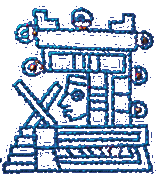GOD
A
D
O
N
A
I
Y
A
H
W
E
H
C
H
I
Archaeoastronomy
-The study of astronomical practice in past societies
| Archaeoastronomy,
together with ethnoastronomy, has emerged during the last twenty-five
years as a thriving interdiscipline. It strives to comprehend the
meaning of astronomical practice in different cultural contexts. This is of particular interest to astronomers and historians of science, but for the archaeologist or anthropologist forms merely one aspect of the study of human societies in general. It is, nonetheless, an aspect of great importance: the movements of the heavenly bodies are of almost universal concern, even amongst the most technologically primitive of hunter-gatherer societies. Stellar lore and astronomical practice invariably form part of a "world view" which is integrated with agriculture, religion, political ideology: indeed, all aspects of life. Many prehistoric ritual monuments in Britain manifest astronomical symbolism in their architecture, such as alignments upon the rising and setting positions of the sun and moon. |
 |
Archaeoastronomical
investigations are highly interdisciplinary, involving the integration
and interpretation of evidence from widely ranging fields such as
archaeology, astronomy, statistics, ethnography and ethnohistory,
and requiring a well-developed critical perspective in all of them. This in itself raises some fascinating methodological issues; differences of approach, misunderstandings and ignorance lay behind many of the interdisciplinary conflicts of the 1960s and 1970s concerning Stonehenge and "megalithic astronomy". |
|
Further Reading: |
B
U
D
D
H
A
E
L
O
H
I
M
L
O
R
D